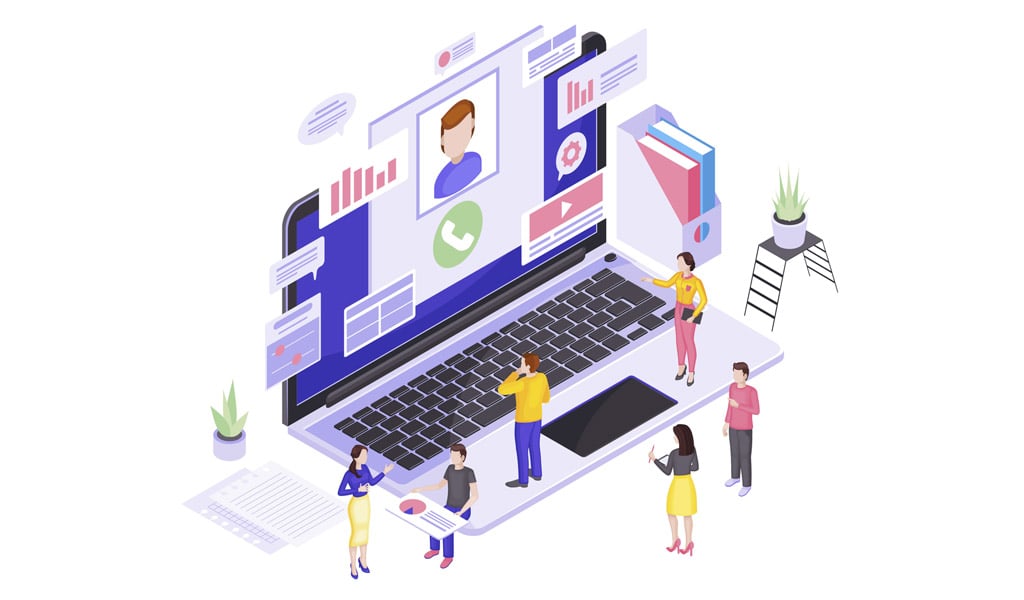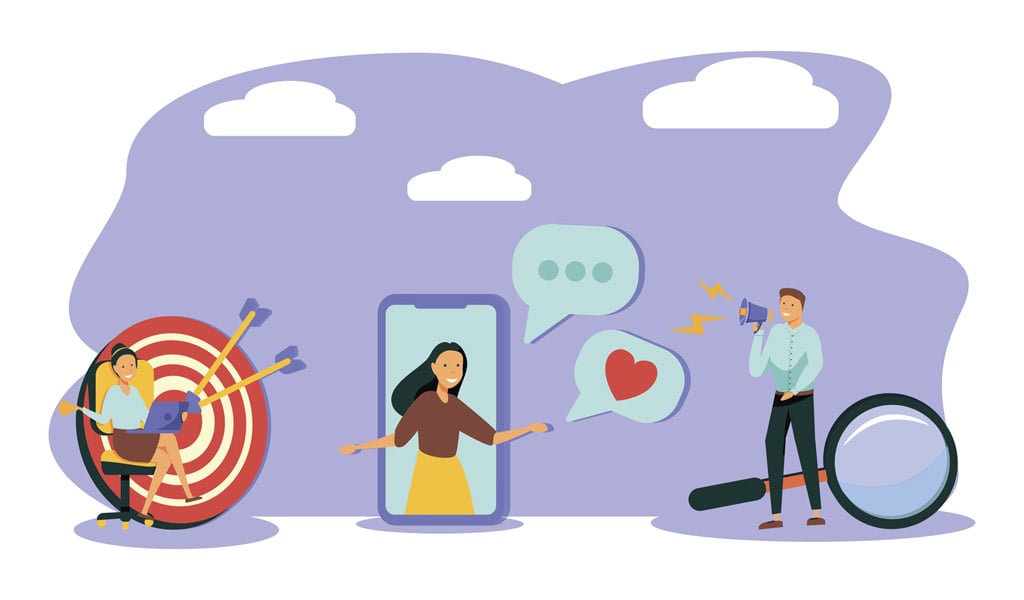
Customer engagement tools are all about finding the right tools to help you better interact with your customers. In the digital age, customer interaction is key. Of course, interacting with customers has always been important in business, but it’s especially important today. In the past, customer interaction was limited by the technology of the time and the reduced access to customers. 50 years ago, a shopkeeper would understand the importance of customer interaction when a customer walked into their shop, but once the customer left, that interaction was over. In the past, we couldn’t interact with people in their homes, or on their devices as they go about their day.
Today, customers are accessible in a way they never were in the past. And this means that companies should be equally accessible. It’s a two-way street! But being accessible and willing to interact with customers is just one part of the equation. With the advanced technology we have access to today, you should be using tools to streamline this interaction and push for the best results. That’s what we’re going to be focusing on today. Let’s take a look!
1. Customer-Centric Dashboards
Customer-centric dashboards are a way of using data to help improve the customer experience by empowering employees to make the right decisions. Today, there are lots of options available when it comes to creating new dashboards. Some companies struggle to decide on what dashboards they should create, how they should create them, and what the dashboard should look like. So, what exactly is a customer experience dashboard?
A customer experience dashboard should help you visualize and interact with data about your customers. It should contain key data related to your customers and their experiences. It should contain customer behavioral data like web analytics, customer feedback data, and sales data (the actions your customers take with their money). For a dashboard to be successful, it must be visually appealing, and the data must be easy to see. You have failed if your dashboard is confusing to look at. Ideally, even new employees with very little experience in the company should be able to look at your dashboard and come away with understanding your customers better.
You should also include data about your customer journey on your customer experience dashboard. In this way, you can use the dashboard to tell a story about your customers. You can include visualized data for each stage of the customer journey, so you can see how customers interact with each of your touchpoints. This type of visualization is a great way of seeing where you can make improvements, as well as setting benchmarks for what is possible.
Remember that people are visual creatures. While smell is the dominant sense for dogs, our dominant sense is sight. We are much better at finding patterns and the meaning of data when we have a visual representation of that data. Put simply, a dashboard could be the difference between making an excellent business decision and missing the opportunity altogether.
Most companies are already using dashboards for call center KPIs or sales data. But you shouldn’t stop here. Dashboards are extremely useful for a range of data within the business. Where there’s data, there is a use case for a dashboard.

2. Chatbots
Chatbots are becoming more and more advanced by the day! There has never been a better time to invest in your chatbot technology. Why is a chatbot so important? When you contact a company with a problem, the experience is often slow. Maybe you have to wait several minutes or even longer to get through to an agent. When you do start talking to an agent, the process can still be slow. This can be for several reasons. Sometimes agents, particularly on live chat, will have to talk to several customers at the same time. Sometimes the agent doesn’t know the answer straight away and instead has to search through many CRM systems or knowledge bases to find the answer. The agent is limited by their knowledge and how fast they can access the right information.
A chatbot is not limited in these ways. A chatbot can respond to the customer instantly. They can use the context of the conversion and keywords, to expertly search for the right information to give back to the customer. Another benefit of chatbots is that they are available 24/7. This means you are always accessible to your customers and can solve their problems no matter what time of the day it is.
Chatbots can be useful for:
- Customer service.
- Helping customers with ideas for shopping or new products.
- Helping customers with accessing important information like user manuals.
- Engagement – Answering questions, offering solutions, or just having a fun chat.
Not convinced a chatbot can be a successful engagement tool? Consider this example. In 2016 cosmetics brand CoverGirl created a chatbot. This chatbot was unique in that it was modeled on a real person, an influencer called Kalani Hilliker. At the time, Kalani was a 16-year-old influencer with 4.8 million followers on Instagram. CoverGirl chose Kalani because she was popular with their target audience and had a unique brand and style.
The chatbot would use Kalani’s unique voice to talk to thousands of customers (usually teen girls) who wanted help with what cosmetics they should buy. These girls trusted Kalani’s opinion and felt like they were interacting with the real Kalani (although they knew they weren’t, of course). On average, these customers would talk to the chatbot for 12 minutes, proving that the chatbot was engaging enough to have a full conversation with. Almost half of these customers went on to click through to a coupon. When you compare this to the measly 2-4% click-through rate on email coupons, this is extremely impressive.
Chatbots can sift through large amounts of information in a matter of seconds and return relevant results to the customer. They can also be designed in any way that you want. They can be designed to be an excellent representation of your brand, reflecting your company voice and culture. Your company might not be focused on selling cosmetics to teenage girls, but the philosophy behind CoverGirl’s strategy can be applied to almost every industry.
3. Surveys
There are many survey creations tools out there, with SurveyMonkey being one of the most well-known. Surveys have many useful applications in business. When it comes to how they help customer engagement, it largely comes down to knowing your customer on a deeper level. You can use surveys to find out key statistics about your customer base and use this to decide on your target customers. You can use customer surveys to create your customer segments. You can also use surveys to find out what your business does well and not so well.
You might find that most of the customers who buy product X are extremely satisfied, but the customers who buy product Y usually have a bad experience. This data will inform how you engage with your customers. For example, satisfied customers might enjoy offers on upgrades or similar products. However, your engagement with dissatisfied customers will look quite different.
4. Customer Churn Tools
Tracking your customer churn can help you get to the bottom of what is causing your customer to leave. Like most things in the modern age, this process is data driven. The goal is to look for patterns in the data. Do most customers leave at a certain time of year? Is this because you have a seasonal product, or is it something more mysterious? Do you lose a lot of customers when your competitors run discounts and offers on their products? Or is there a more noticeable downward trend? If there is, this could mean that your product is no longer useful to customers, either because there are better alternatives out there, or because the world has outgrown it. You could be the best VHS rental service that ever existed, but you’ll still bleed customers when no one wants VHS tapes anymore.

5. Listening Tools
It’s important to keep track of how people are talking about your business. This doesn’t just mean reviews on Google or other trusted sites; it means tracking any time your company is mentioned on social media or other content. Not everyone will write a review, sometimes people want to just share their experience with their friends or followers on social media. Each time they do this, you learn more about how customers perceive your brand. You also learn how to engage with your customers, because most of the time they are telling you exactly what they want.
With content, you can track how journalists and bloggers are talking about your company. These people often have a high degree of influence over your readers, so positive words about your company can go a long way. A good article that showcases something great about your company might cause higher customer engagement levels.
6. In-app Communications
In-app communications can be a great way to engage with your customers and help deliver them relevant content. The key here is to be relevant and timely. You shouldn’t disrupt your customer’s experience, or hammer them with advertisements they aren’t interested in. You can push them to buy products they have expressed interest in, remind them of the items in the cart, or send helpful articles if they seem stuck. The more relevant you are with your in-app communications, the more time the customer will spend on the app.
7. Emails
Email is a tricky subject and an entire strategy on its own. However, emails can still be a useful engagement tool even in 2020. The key to successful email engagement is to only offer relevant content to your customers. This means the content needs to be personalized and include a call to action that will work if the customer is already interested in your product. People hate receiving generic emails, and these emails will find you in the spam folder faster than you can send the next one.
8. Push Notifications
Push notifications are a great way to remind your customers of your business. In 2020, your customers will almost all have smartphones and have 10s of apps on their phones. You are no longer competing with space, but with time. Most people are happy to download an app and keep it on their phone. After all, we all have huge storage on our phones today. They will give you a space on their screens, but you will have to work to get their attention.
Much like emails, the key to push notifications is to be relevant and avoid being annoying at all costs. If you annoy your customers, then you will lose your space on their phone. This is why it’s a good idea to build engagement tools into your app. For example, if you can include an analytics dashboard for your customers to see, then you absolutely should. This works best for exercise apps, or apps where customers use it for a particular goal. For example, if you offer digital art services, you can include a dashboard that tells your customers how long they have spent on particular tasks.